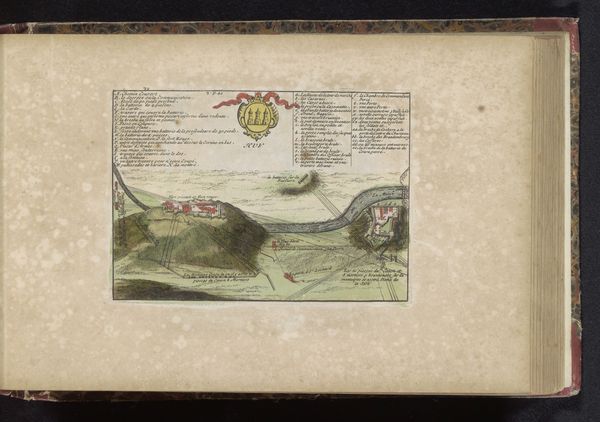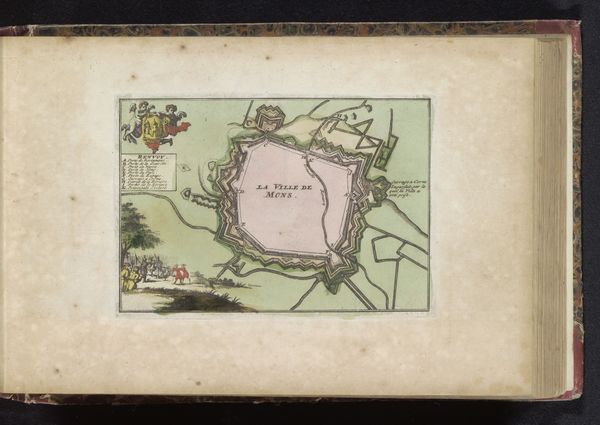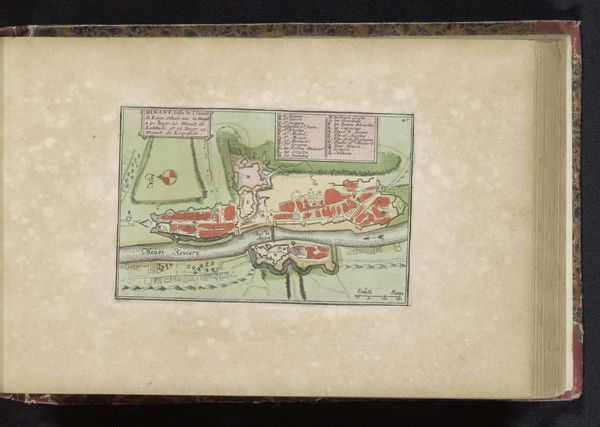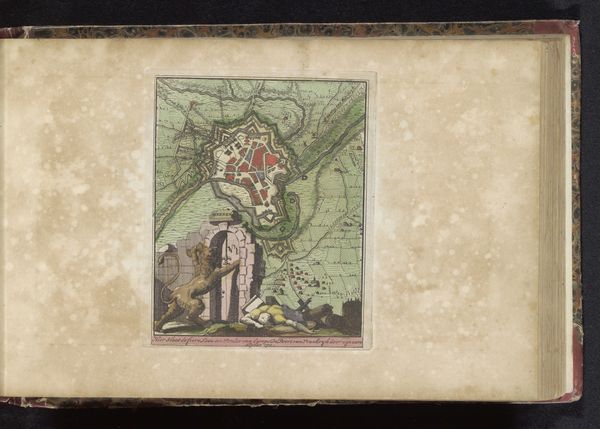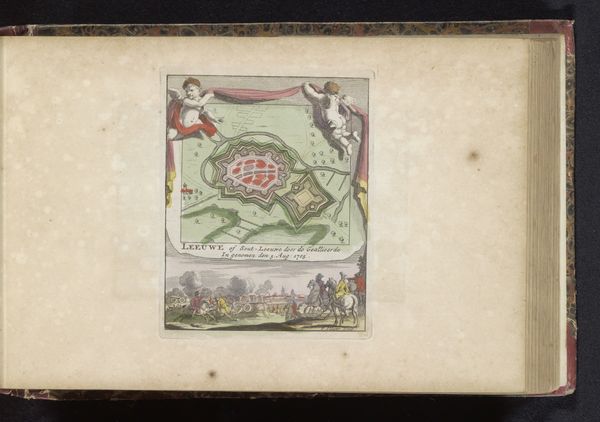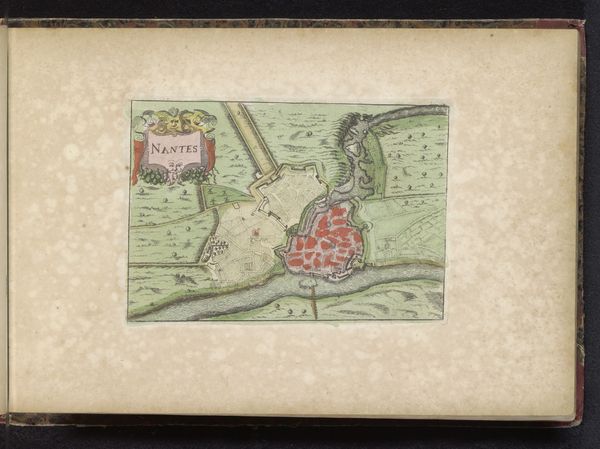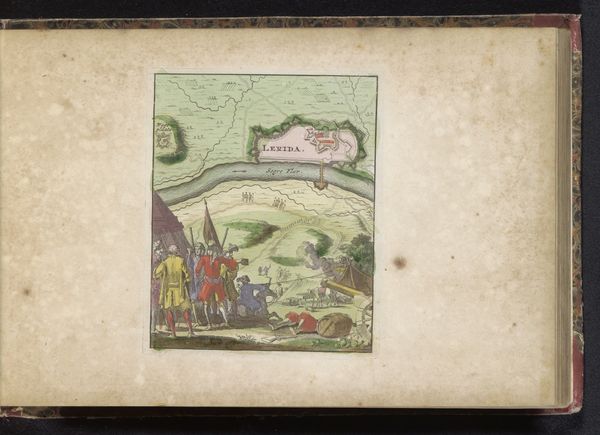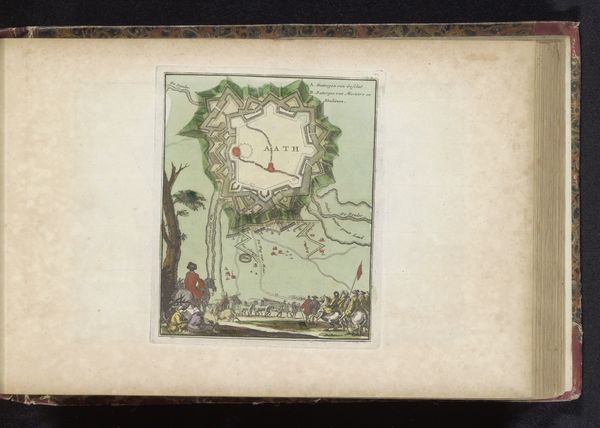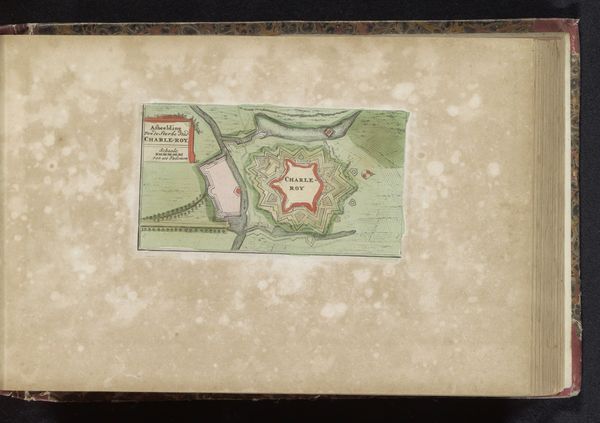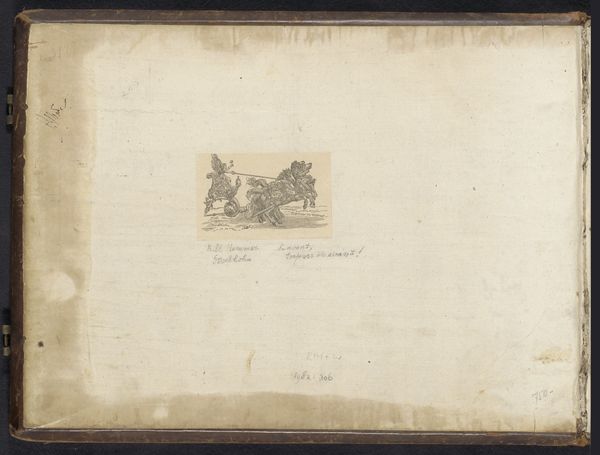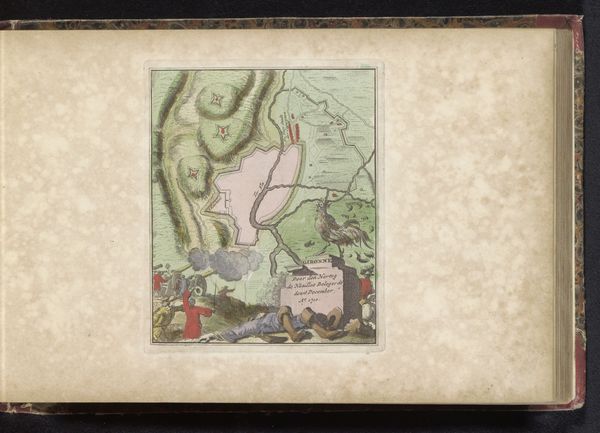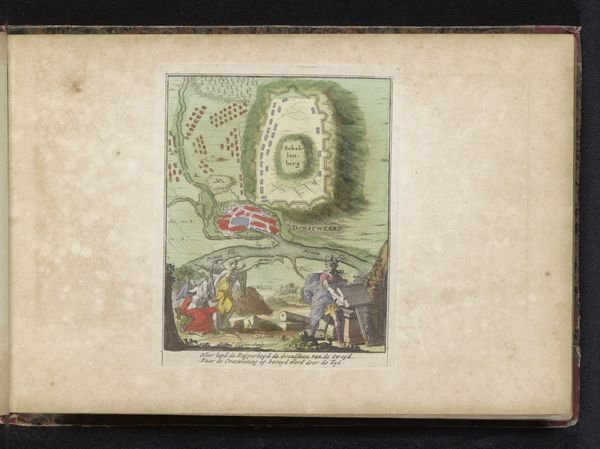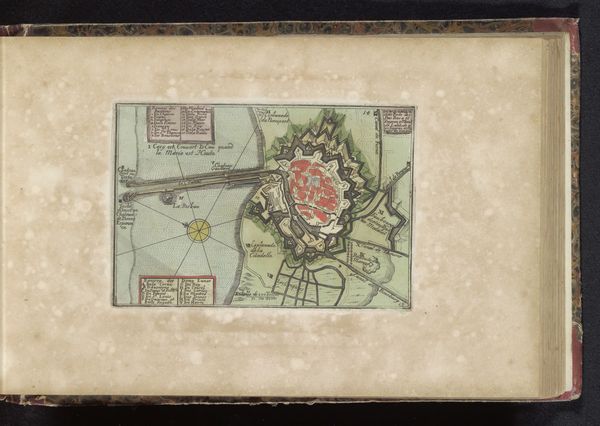
print, watercolor
#
baroque
# print
#
landscape
#
figuration
#
watercolor
#
cityscape
#
history-painting
#
watercolor
Dimensions: height 156 mm, width 124 mm
Copyright: Rijks Museum: Open Domain
This engraving, made around 1704 by Zacharias Chatelain II, depicts the conquest of Ulm, highlighting a flat ground plan of the city and its fortifications. Below this, allegorical figures recline alongside a golden crown, flanked by cannons and military drums. The crown is a symbol laden with millennia of socio-cultural significance and power. Think of the crowns of antiquity – from the laurel wreaths of Roman emperors to the elaborate headdresses of ancient Egyptian pharaohs. Here, the crown represents the transfer of power, a motif echoed across epochs. In medieval tapestries and Renaissance paintings, the presence of a crown often signified divine right and authority, and even in modern-day political cartoons, it can denote supremacy or leadership. Its evolution reflects our ever-changing relationship with authority, transforming from symbols of sacred endorsement to tools of political commentary. It is a cyclical return, echoing through the corridors of time, resurfacing in ways that both honor and critique the potent idea of supremacy.
Comments
No comments
Be the first to comment and join the conversation on the ultimate creative platform.
